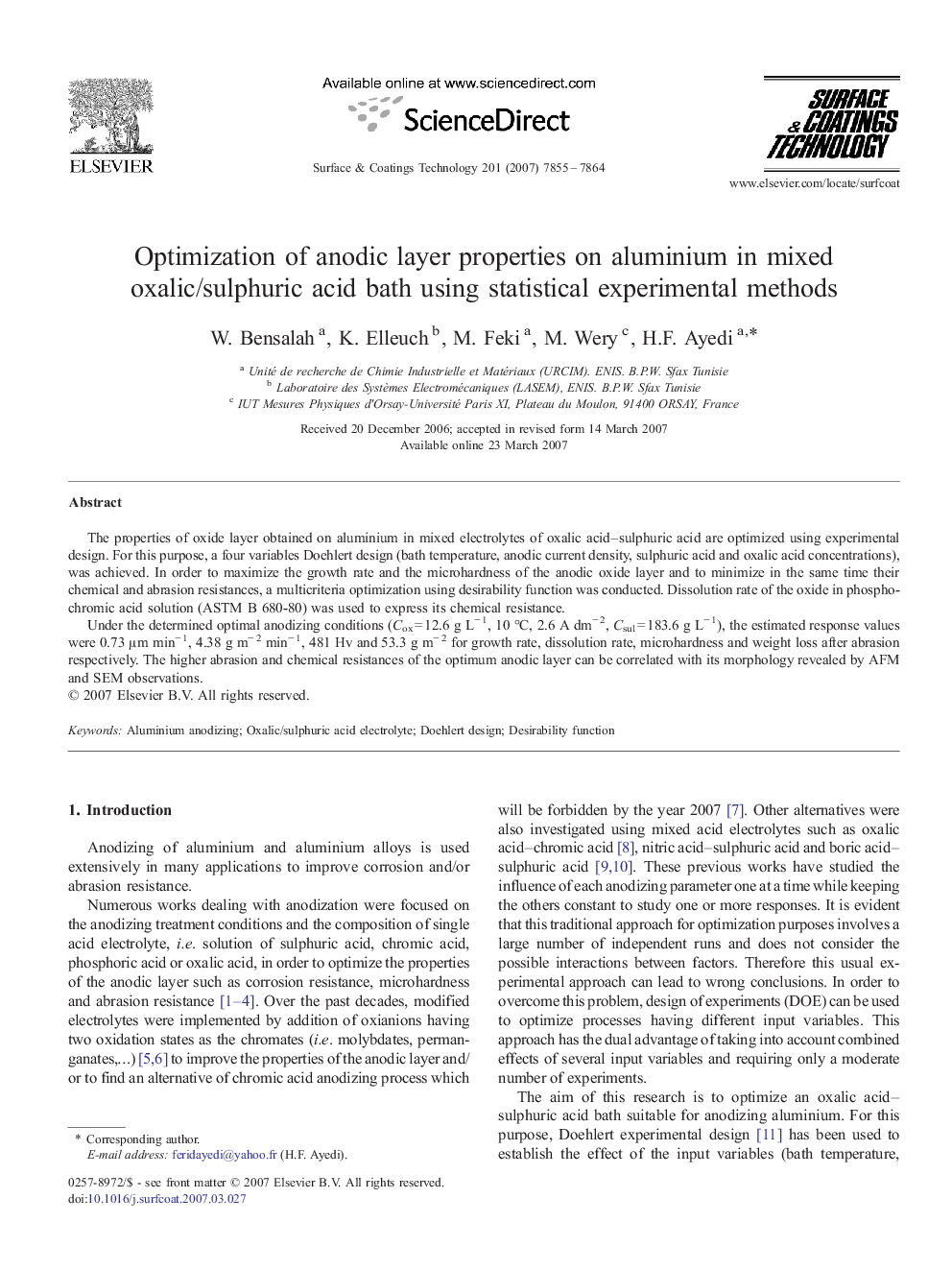| Article ID | Journal | Published Year | Pages | File Type |
|---|---|---|---|---|
| 1661857 | Surface and Coatings Technology | 2007 | 10 Pages |
The properties of oxide layer obtained on aluminium in mixed electrolytes of oxalic acid–sulphuric acid are optimized using experimental design. For this purpose, a four variables Doehlert design (bath temperature, anodic current density, sulphuric acid and oxalic acid concentrations), was achieved. In order to maximize the growth rate and the microhardness of the anodic oxide layer and to minimize in the same time their chemical and abrasion resistances, a multicriteria optimization using desirability function was conducted. Dissolution rate of the oxide in phospho-chromic acid solution (ASTM B 680-80) was used to express its chemical resistance.Under the determined optimal anodizing conditions (Cox = 12.6 g L− 1, 10 °C, 2.6 A dm− 2, Csul = 183.6 g L− 1), the estimated response values were 0.73 μm min− 1, 4.38 g m− 2 min− 1, 481 Hv and 53.3 g m− 2 for growth rate, dissolution rate, microhardness and weight loss after abrasion respectively. The higher abrasion and chemical resistances of the optimum anodic layer can be correlated with its morphology revealed by AFM and SEM observations.
